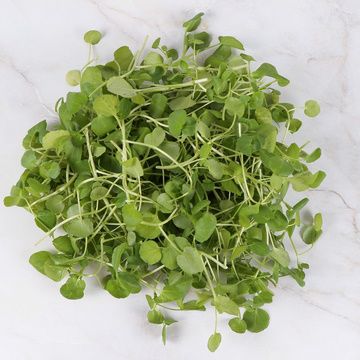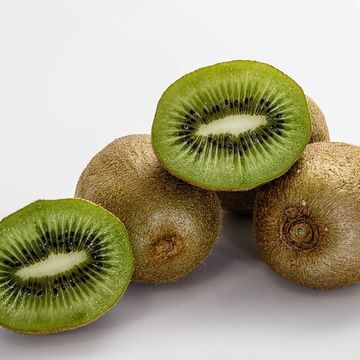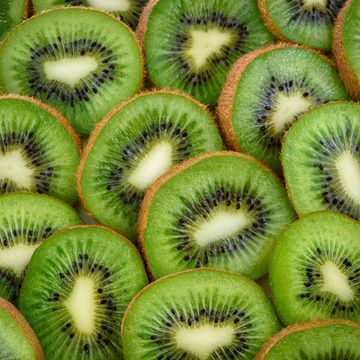Could items as simple as watercress and chocolate be the key to maintaining good health? Find out in this week’s Nutrition News which covers the latest in nutritional research.
Watercress for skin health
Researchers from Devon are exploring the potential skin health properties of watercress. Dr. Kyle Stewart, a Paignton GP, initiated the research after encountering a severe case of nappy rash. Collaborating with Prof. Paul Winyard, a biochemist from the University of Exeter, they identified a chemical compound in watercress that could potentially treat nappy rash, dermatitis, and eczema.
The research, spanning a decade, began when Dr. Stewart, who was intrigued by the biochemistry of diseases, learned about urease, an enzyme that has been linked to nappy rash. Discovering that watercress contains urease inhibitors, he conducted early experiments in successfully extracting beneficial compounds from the vegetable.
Watercress is a leafy green edible plant known for its peppery taste. It is often used in salads and sandwiches and is a great source of vitamin C and calcium.
According to the BBC article “Devon researchers believe watercress could treat nappy rash”, Prof. Winyard's expertise in inflammation is another aspect that enabled the duo to collaborate to address real-world skin health problems. The research, conducted in Exeter's labs, culminated in a biorefinery at Skypark, where watercress is converted into extract on a significant scale. The resulting extract is then sent to Tiverton for testing, bottling, and labelling of the skincare products, under the brand Prof&Doc.
The researchers hope to fund ongoing research into inflammatory skin conditions through the sales of these skincare products. Their ultimate goal is to obtain approval from the UK medicines regulator for treating various skin problems.
Prof. Winyard finds the project exciting, showcasing the possibilities in the region. Dr. Stewart expresses optimism about developing new medicines based on the insights gained during the research. As they delve into the potential of watercress, this interdisciplinary project holds promise for advancing skincare and potentially introducing innovative products to support skin health.
Dark chocolate for heart health
High blood pressure poses a significant risk to cardiovascular health, and researchers are actively exploring strategies for prevention, management and general heart health support. A recent study, reported in the article “Could dark chocolate have a blood pressure-lowering effect?” investigated the potential role of dark chocolate in reducing the risk of essential hypertension, a form of high blood pressure without a known cause. The findings suggested that dark chocolate consumption might not only decrease the risk of essential hypertension but also reduce the risk of blood clots, although a causal relationship could not be established so further research would be needed.
Essential hypertension is a prevalent medical condition characterised by elevated blood pressure levels without an apparent underlying cause. Dr. Rigved Tadwalkar, a board-certified cardiologist, emphasised its association with cardiovascular diseases such as coronary artery disease, heart failure, and stroke. While lifestyle changes and medications can manage high blood pressure, the study focused on exploring specific foods' potential role in prevention and support.
Dark chocolate, containing at least 50% cocoa solids and rich in flavanols, emerged as a subject of interest for researchers. Karen Z. Berg, a registered dietitian nutritionist, highlighted that dark chocolate, with higher cocoa percentages, offers health benefits such as fibre, iron, magnesium, phosphorus, and zinc. The study used Mendelian randomisation, a method analysing genetic differences, to investigate the causal relationship between dark chocolate intake and cardiovascular diseases.
Promisingly, the results indicated a potential link between genetically predicted dark chocolate intake and a reduced risk of essential hypertension. Dr. Tadwalkar expressed optimism about the study's promise for the prevention of essential hypertension, envisioning future dietary recommendations and the development of therapies based on dark chocolate-derived compounds.
However, the study's limitations, including a small sample size and data constraints, were acknowledged. While dark chocolate intake was associated with a reduced risk of hypertension, no similar associations were found for other cardiovascular conditions. Dr. Cheng-Han Chen, an interventional cardiologist, urged caution in interpreting the findings and recommended against increasing dark chocolate intake solely based on this study.
Despite the challenges and limitations, the research points to the potential benefits of dark chocolate in preventing essential hypertension, inviting further exploration of its precise mechanisms and broader impact on cardiovascular health.
Gut-brain circuit found to control sugar and fat cravings
The longstanding mystery of why we tend to overeat unhealthy foods has been partially unravelled by a new study published int eh Science Daily article “New gut-brain circuits found for sugar and fat cravings”. The study shed light on the internal neural wiring that governs our cravings for fats and sugars. While the vagus nerve plays a role in conveying internal sensory information about food's nutritional value, the molecular basis of the brain's reward associated with what we eat has previously remained unclear.
The study identified distinct pathways for fat and sugar cravings, revealing that these pathways, when combined, excessively trigger our desire to eat more than usual. Lead author Dr. Guillaume de Lartigue emphasises the gut's pivotal role, stating that nerve cells in the gut, rather than taste cells in the mouth, are key drivers behind the appeal of fats and sugars.
Cutting-edge technology allowed the researchers to manipulate fat or sugar neurons directly in the vagus nerve system, demonstrating that both types of neurons cause dopamine release in the brain's reward centre. Two dedicated vagus nerve pathways—one for fats and another for sugars—originating in the gut, relay information about consumed food to the brain, which leads to cravings.
Stimulating gut vagal nerves with light revealed that sugar and fat are sensed by discrete neurons of the vagus nerve, engaging parallel but distinct reward circuits to control nutrient-specific reinforcement. Notably, simultaneously activating both fat and sugar circuits created a powerful synergy, leading to significantly more dopamine release and, ultimately, overeating.
The study's findings provide insights into the control of "motivated" eating behaviour, suggesting that a subconscious internal desire for a diet high in both fats and sugar may counteract conscious dieting efforts. This discovery gives us further information to assist with weight management and illustrates the important link between gut health and wider general health.
Share your thoughts
Agree with the findings in this week’s Nutrition News? Share your thoughts with us on Facebook and Twitter.
 Alison is Director and Founder of Metabolics who writes about Metabolics updates, events and natural healthcare. Her experience and passion for natural supplements and healthcare comes from her years of experience as a practising osteopath, having founded Metabolics in her search for high quality, natural products in her own work. Alison has been a qualified and practising Osteopath since 1981 and regularly gives seminars on a range of healthcare subjects to the wider practitioner community helping share her knowledge and experience.
Alison is Director and Founder of Metabolics who writes about Metabolics updates, events and natural healthcare. Her experience and passion for natural supplements and healthcare comes from her years of experience as a practising osteopath, having founded Metabolics in her search for high quality, natural products in her own work. Alison has been a qualified and practising Osteopath since 1981 and regularly gives seminars on a range of healthcare subjects to the wider practitioner community helping share her knowledge and experience.



